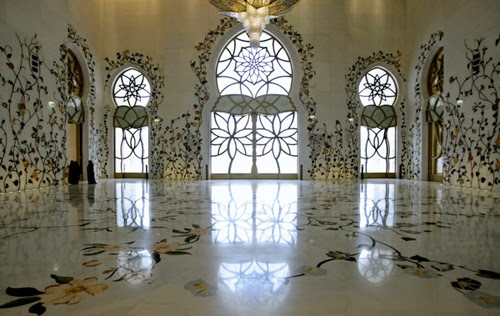Islamic Religion was the foundation
of Islamic Design. Mohammad is the figure-head for the Islamic religion and he
lived from 570-632 C.E. Mosques served as the central facility for prayer and
worship. The first mosque (Mohammad's Farm) was a prototype for all mosques to
come. The features of the mosques were: perimeter wall, covered hall of
columns, and the courtyard. The purpose of the mosques was to provide a place
where many people could come and pray to God by kneeling on a carpet and facing
Mecca.
Horseshoe arches, ogival arches,
muqarnas-filled niches, and muqarnas domes are distinctive characteristics of
Islamic design. They can be found used inside the mosques and in many other
Islamic buildings.
| Muqarnas are a type of architectural ornamentation that are
reminiscent of stalactites or honeycomb. They were developed around the middle
of the 10th century in northeastern Iran and they take the form of small
pointed niches, stacked in tiers which project beyond lower tiers. They are
commonly constructed of brick, stone, stucco, or wood, and are clad with
painted tiles, ood, or plaster. They are typically applied to domes,
pendentives, cornices, squinches and the undersides of arches and vaults.
The Taj Mahal is a famous example of
Islamic Design. It was built from 1632-1648 C.E. It was commissioned by Mughal
Emperor Shah Jahan after the death of his favorite wife, Mumtaz Mahal. It was
seen as an earthly replica of the house of Mumtaz in paradise.
|
| My Favorites From This Time Period |
I love so much about Islamic design.
It is extremely beautiful and intricate. I love the use of gold and the deep
blues that can be found in some places. I also find design elements such as the
muqarnas fascinating. They are just so intricate and beautiful.
|
Modern
Interiors Using Islamic Design
|















